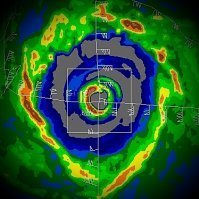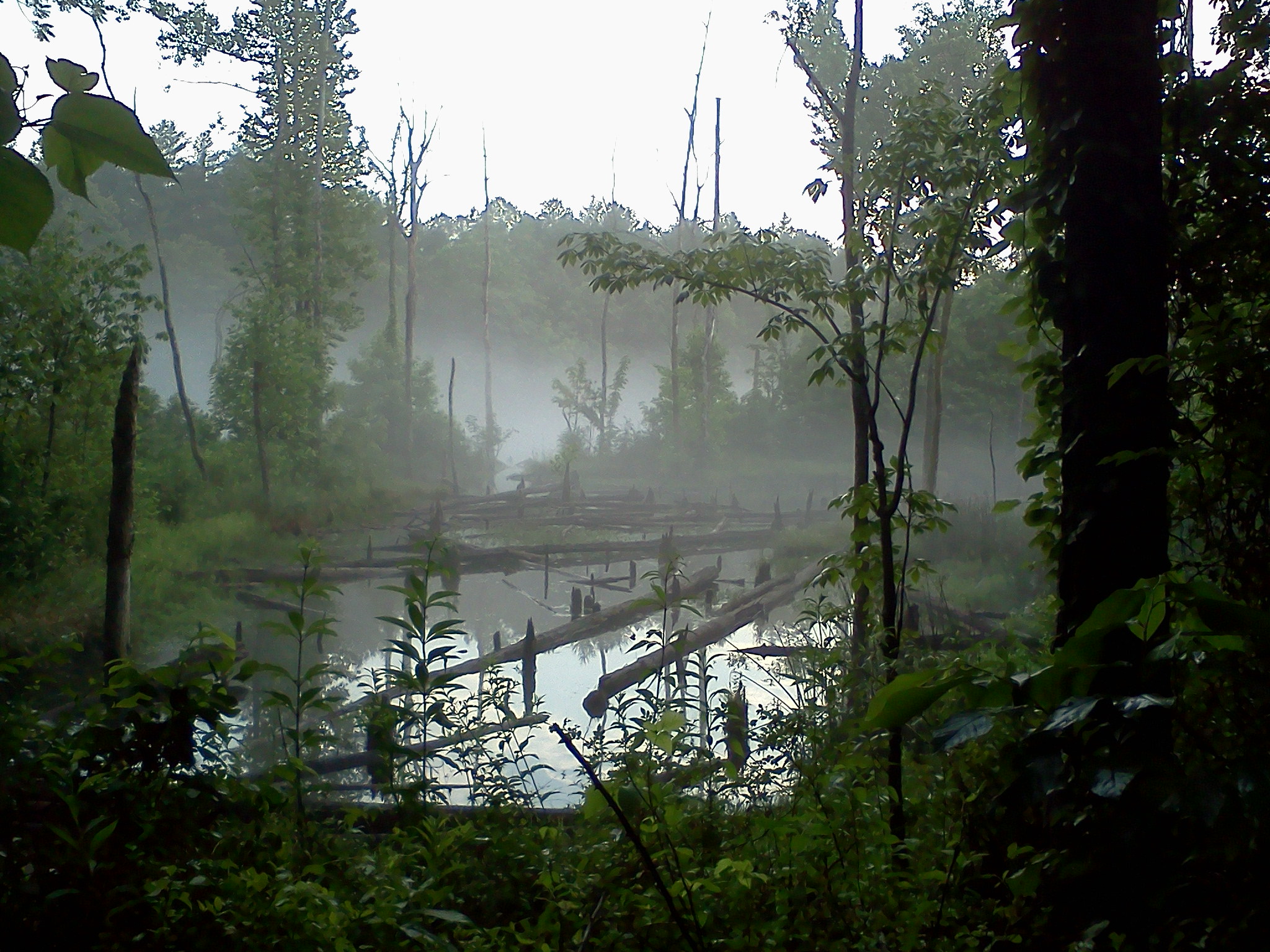-
Posts
4,715 -
Joined
-
Last visited
Content Type
Profiles
Blogs
Forums
American Weather
Media Demo
Store
Gallery
Everything posted by Windspeed
-
I agree, Carver. I think this Summer is probably leaning hot and dry for interior SE CONUS. Nino 3-4 is still about average to slightly above near surface but there is sub 22-24° isotherm progressing upward and Nino 1-2 is already running 24° near surface. A moderate La Niña looks in play at this point, and orientation of the Azores-Bermuda ridge axis may very well torch us July-September. NMME guidance suggests a strong La Niña presence into Winter. Still, high and dry isn't an absolute certainty. You never know how much low-level tropical feed can downplay/offset potential drought. Yes, WATL 500dm heights are critical to overall pattern but it doesn't take too much displacement to swing dry hot vs humid hot with plenty of afternoon/evening convective showers. OTOH, hints that the Atlantic MDR may run quite bit above normal by July. The deep MDR, especially the 50°W to the Verdes is running above average. Are we looking at a hyperactive NATL tropical season? I am starting to think so. Again, how strong do Western ATL heights remain in place through late September? Will there be enough blocking in place to keep everything south of the region? This may be a bad year for Mexico and W Caribbean impacts. But something may sneak up here to alleviate our dry conditions as well. That is to say, I wouldn't count out some early tropical season respite (June-July) from the GOM with a few stalled-out variety tropical lows. August-September might truly be the dog days of Summer this year however.
-
Plenty of incredible damage videos and images, but this particular photo of the damage path looking east towards Cookeville is disturbing. Any number of deaths is awful and I am certainly not downplaying this tragedy for those suffering, only just to say that considering the time of night and the track/damage path, it is perhaps a miracle the numbers aren't much higher. Please consider finding a legitimate donation fund setup to help those in need.
-
Some crazy survival stories coming out of this long-lived tornado. I do wish news agencies would stop referring to the event as an "outbreak" however. https://www.cbsnews.com/news/nashville-tornado-putnam-county-death-toll-rises-today-2020-04-03/
-

Wild Speculation for Winter 20 -21
Windspeed replied to Holston_River_Rambler's topic in Tennessee Valley
I agree. Not to slander the individual or say they are uneducated, anyone can be wrong in the process of research. I would just be cautious and certainly not trusting. Established science would suggest we are lucky to not be in a Solar maximum, that atmospheric influences might be even more extreme. Though again, divergence in climate is not simply explained by it's hotter, colder, wetter or drier at any specific location. There are, of course, other regional variables; but the idea here is increasing periods of measurable short and long term extreme deviations per climatological norm at any specific geographic location. If anything, that we are not within increased Solar output could be taken as alarming. -

TN valley heavy rain/flooding week of whenever
Windspeed replied to janetjanet998's topic in Tennessee Valley
And here we go... -
https://www.aoml.noaa.gov/hrd/data_sub/re_anal.html Of note, aside from the upgrade of Betsy to a Cat 4 as noted above, Carla is also now a confirmed Cat 4 landfall into Texas. Haiti was hit by two Cat 4 hurricanes within two years in Cleo ('64) and Flora ('63). Belize was also impacted by a Cat 4, Hattie, '65. Full report can be found here: 1961-1965 revisions
- 46 replies
-
- 1
-

-
- historical tropical cyclones
- hurricanes
-
(and 3 more)
Tagged with:
-
Halong's development and structure very reminiscent of Mikael in the GOM last year. Probably SS Cat 5 right now. ADT up to 7.3 / 150 kts now. This beast is cranking...
-
Well the micro-vortex is the tiny eye we observed with Hagibis. Really this phenomenon is no different than your average microcane or small hurricane eyewall in general, it just takes a very low shear environment + very high maximum potential intensity w/ high TCHP to get something like a Hagibis or Wilma; and even still, the aformentioned type of micro-vortex may still not occur. Otherwise, outer banding influences in the formative stages usually starves off or dissipates a smaller vortex before MPI can be achieved. Usually the intensification phase of the entire tropical cyclone's broader core cuts off or diverts outer low level convergence rather quickly away from a tiny interior vortex, if it happens to exist, while a larger eye or concentric band takes over. This is usually prior to the system even becoming a hurricane or typhoon. It's just a really chaotic and unpredictable process, at least until the main eyeband or core has consolidated, to know how large or small the dominate vort will be. In short, there really isn't a way to model the chaotic nature of such a phenomenon. It is rather part luck on how small and aligned an MCS-induced mid-level vort is in conjunction to the low level vort underneath. If that can resolve and the MPI is sky high, a small vort can become dominant and remain that way through rapid intensification all the way into the sub-900s hPa. But it's really a crapshoot to know the probability of such occurring. Sometimes the original vort max is just larger and remains that way.
-
Radar confirms that Super Typhoon Hagibis did not actually make landfall on Anatahan Island. The southern periphery of the island got scraped by the core, but the worst conditions of the inner boundary of the eyewall missed just offshore. Again, good example how satellite imagery can be deceiving as it looked like a direct hit in the posts above. Angle of sensor, parallax and lat/long postion of eye is important.
-
Rare is a better term. I mentioned some others above: Pam, Patricia, Wilma, Gilbert and Allen all had similar structures. There have been a number of others that developed a super intense >5nm micro-vortex eyewall within a much larger banded concentric envelope. Still, it's not something we see with regards to such extreme sub 890 hpa estimated intensities on a yearly basis. Think perhaps once every 5-10 years globally within the satellite era.
-
Yes, it was inhabited prior to volcanic unrest. The caldera has been active in recent times with a VEI-4 eruption in 2003. Anatahan is a desolate place that nobody has returned to. I should also say that based on angle of satellite and parallax, it may look like a landfall, but we'll need to confirm it with the radar beam out of the N. Marianas. The base of the tiny 3nm wide vortex may actually be missing south of Anatahan though it looks like a direct hit on the island. Edit: Sorry for edits, Tapatalk is being annoying and lagging posts atm.
-
Well-formed small vortex in the right place at the right time. Nearly all requirements for RI and MPI met at once. Strong banding around such a small vortex will eventually halt this round but there will likely be reintensification after ERC with a larger eye. Having said that, based on sat estimates, peak intensity has been achieved. At this time there isn't much off structurally in comparison to Patricia or Wilma. The eye is doing a trochoidal wobble that may slingshot it right over the island -- a possible sub 900 hPa hit of you've ever seen one.
-
McLean's Town, one of the communities in eastern Grand Bahama. It's pretty much what you would expect.
-
That's a mean for projected return. It doesn't suggest we are due in another 10-20 years, only that per climatological average, a sub-900 mb landfall occurs within a spread of 102 years. There could be more or less years, or even 300 years between such events. I would need to read the paper in more detail on how they came up with those means. The 265-yr mean seems much too large to me however these are modeled datasets from projections and not historical observations since we do not have measurements prior to the 1800s. There are only a few estimated examples of such strong tempests prior to that due to captain logs or governing records.
-
Yeah I am infuriated. What does it even mean to be an American anymore with shit like this happening?
-



